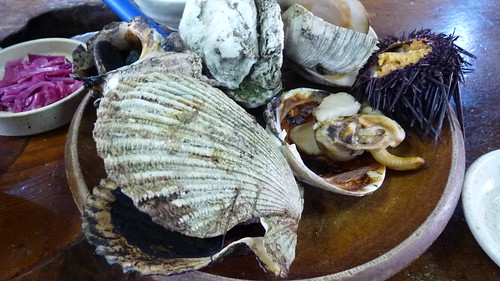Added to the reaction buffer. An inverted fluorescence microscope (IX70, Olympus, lens PlanApo x100/ 1.40 oil, fluorescence cube: MWIG) connected to a silicone intensified tube camera (C 2400-08, Hamamatsu Photonics Germany, Herrsching am Ammersee, Germany) and a VHSPAL video recorder with a frame rate of 25 frames/s were used to record the rotating filaments. Recorded videos were digitalized using an A/D converter (Pinnacle Systems, Munchen, Germany) ?and analyzed with a self-written CAL 120 supplier software in Matlab (Math Works, Ismaning, Germany).Protein concentrationProtein concentrations were determined by using 15900046 a modified assay described by Sedmak and Grossberg [22]. After addition of the reaction solution samples were incubated for 5 min at room temperature. Protein concentrations were determined photometrically at 595 nm (Hewlet-Packard, Boblingen, Germany) and ?compared to a reference curve of 5?0 mg/ml lysozyme.SDS-PAGESDS-PAGE was performed using the Laemmli system with a 12.5 separating gel and a non-oxidizing sample buffer. 3? mg protein was separated applying 200 V for 1 h in an electrophoresis chamber (Biorad, Hercules, USA). Staining was carried out with coomassie brilliant blue R-250. For reduction, oxidation, and rereduction proteins where incubated overnight with 10 mM dithiothreitol (DTT), 400 mM Ellman’s reagent (DTNB), and 30 mM DTT, respectively. The cross-link yield of scanned gels was determined using Adobe Photoshop (Adobe Systems Incorporated, San Jose, USA). The overall intensity of boxes with the same size fitted around the corresponding bands of each lane of the SDS-PAGE was determined. Background intensity was subtracted, and obtained values were compared. The percentagesResultsSix EF1 mutants (MM10, GH54, FH4, GH19, PP2, and SW3) each containing two opposing cysteines, one on subunit 23977191 c and the other one on either subunit a or b (Tab. 1), were analyzed for (i)Unfolding of Subunit Gamma in Rotary F-ATPasetheir respective cross-link yield, and (ii) the ATP hydrolysis activity in bulk solution as well as on the single molecule level. The crosslink yields were determined from SDS-gels, while the hydrolysis activities were determined colorimetrically or by a videomicroscopic rotation assay, respectively. The data of the three new mutants (GH54, FH4, and GH19) were compared to the results of the mutants MM10, PP2, and SW3, and the wild type KH7 that have been published before [17].SDS-PAGE and immunoblotsFig. 2 demonstrates by SDS-PAGE (Fig. 2A , left) and immunoblot (Fig. 2A , right) the ability of the three new mutants GH54, FH4, and GH19 to form a disulfide bridge. (Gels and immunoblots for MM10, PP2, and SW3 were shown before [17].) Reduction and oxidation was enforced by treating the proteins overnight with 10 mM DTT and 400 mM DTNB, respectively, before applying the samples to the SDS-PAGE. The SDS gels in Fig. 2A (left) show the bands of the a, b, c, and e subunits of EF1 in the reduced and re-reduced (after oxidation) state. Subunit d (and in FH4 (Fig. 2B) also subunit e) was not visible and probably lost during protein purification. However, subunits d and e  are not necessary for ATP hydrolysis in F1. In the oxidized state the band of subunit c disappeared. HIV-RT inhibitor 1 Instead two new high molecular bands appeared that were attributed to the ca and a2 cross-link. Given the enzymes stoichiometric ratio of a to c (3:1) the monomeric aband was still visible. Without added reducing or oxidizing agent (due to partial oxidation by at.Added to the reaction buffer. An inverted fluorescence microscope (IX70, Olympus, lens PlanApo x100/ 1.40 oil, fluorescence cube: MWIG) connected to a silicone intensified tube camera (C 2400-08, Hamamatsu Photonics Germany, Herrsching am Ammersee, Germany) and a VHSPAL video recorder with a frame rate of 25 frames/s were used to record the rotating filaments. Recorded videos were digitalized using an A/D converter (Pinnacle Systems, Munchen, Germany) ?and analyzed with a self-written software in Matlab (Math Works, Ismaning, Germany).Protein concentrationProtein concentrations were determined by using 15900046 a modified assay described by Sedmak and Grossberg [22]. After addition of the reaction solution samples were incubated for 5 min at room temperature. Protein concentrations were determined photometrically at 595 nm (Hewlet-Packard, Boblingen, Germany) and ?compared to a reference curve of 5?0 mg/ml lysozyme.SDS-PAGESDS-PAGE was performed using the Laemmli system with a 12.5 separating gel and a non-oxidizing sample buffer. 3? mg protein was separated applying 200 V for 1 h in an electrophoresis chamber (Biorad, Hercules, USA). Staining was carried out with coomassie brilliant blue R-250. For reduction, oxidation, and rereduction proteins where incubated overnight with 10 mM dithiothreitol (DTT), 400 mM Ellman’s reagent (DTNB), and 30 mM DTT, respectively. The cross-link yield of scanned gels was determined using Adobe Photoshop (Adobe Systems Incorporated, San Jose, USA). The overall intensity of boxes
are not necessary for ATP hydrolysis in F1. In the oxidized state the band of subunit c disappeared. HIV-RT inhibitor 1 Instead two new high molecular bands appeared that were attributed to the ca and a2 cross-link. Given the enzymes stoichiometric ratio of a to c (3:1) the monomeric aband was still visible. Without added reducing or oxidizing agent (due to partial oxidation by at.Added to the reaction buffer. An inverted fluorescence microscope (IX70, Olympus, lens PlanApo x100/ 1.40 oil, fluorescence cube: MWIG) connected to a silicone intensified tube camera (C 2400-08, Hamamatsu Photonics Germany, Herrsching am Ammersee, Germany) and a VHSPAL video recorder with a frame rate of 25 frames/s were used to record the rotating filaments. Recorded videos were digitalized using an A/D converter (Pinnacle Systems, Munchen, Germany) ?and analyzed with a self-written software in Matlab (Math Works, Ismaning, Germany).Protein concentrationProtein concentrations were determined by using 15900046 a modified assay described by Sedmak and Grossberg [22]. After addition of the reaction solution samples were incubated for 5 min at room temperature. Protein concentrations were determined photometrically at 595 nm (Hewlet-Packard, Boblingen, Germany) and ?compared to a reference curve of 5?0 mg/ml lysozyme.SDS-PAGESDS-PAGE was performed using the Laemmli system with a 12.5 separating gel and a non-oxidizing sample buffer. 3? mg protein was separated applying 200 V for 1 h in an electrophoresis chamber (Biorad, Hercules, USA). Staining was carried out with coomassie brilliant blue R-250. For reduction, oxidation, and rereduction proteins where incubated overnight with 10 mM dithiothreitol (DTT), 400 mM Ellman’s reagent (DTNB), and 30 mM DTT, respectively. The cross-link yield of scanned gels was determined using Adobe Photoshop (Adobe Systems Incorporated, San Jose, USA). The overall intensity of boxes  with the same size fitted around the corresponding bands of each lane of the SDS-PAGE was determined. Background intensity was subtracted, and obtained values were compared. The percentagesResultsSix EF1 mutants (MM10, GH54, FH4, GH19, PP2, and SW3) each containing two opposing cysteines, one on subunit 23977191 c and the other one on either subunit a or b (Tab. 1), were analyzed for (i)Unfolding of Subunit Gamma in Rotary F-ATPasetheir respective cross-link yield, and (ii) the ATP hydrolysis activity in bulk solution as well as on the single molecule level. The crosslink yields were determined from SDS-gels, while the hydrolysis activities were determined colorimetrically or by a videomicroscopic rotation assay, respectively. The data of the three new mutants (GH54, FH4, and GH19) were compared to the results of the mutants MM10, PP2, and SW3, and the wild type KH7 that have been published before [17].SDS-PAGE and immunoblotsFig. 2 demonstrates by SDS-PAGE (Fig. 2A , left) and immunoblot (Fig. 2A , right) the ability of the three new mutants GH54, FH4, and GH19 to form a disulfide bridge. (Gels and immunoblots for MM10, PP2, and SW3 were shown before [17].) Reduction and oxidation was enforced by treating the proteins overnight with 10 mM DTT and 400 mM DTNB, respectively, before applying the samples to the SDS-PAGE. The SDS gels in Fig. 2A (left) show the bands of the a, b, c, and e subunits of EF1 in the reduced and re-reduced (after oxidation) state. Subunit d (and in FH4 (Fig. 2B) also subunit e) was not visible and probably lost during protein purification. However, subunits d and e are not necessary for ATP hydrolysis in F1. In the oxidized state the band of subunit c disappeared. Instead two new high molecular bands appeared that were attributed to the ca and a2 cross-link. Given the enzymes stoichiometric ratio of a to c (3:1) the monomeric aband was still visible. Without added reducing or oxidizing agent (due to partial oxidation by at.
with the same size fitted around the corresponding bands of each lane of the SDS-PAGE was determined. Background intensity was subtracted, and obtained values were compared. The percentagesResultsSix EF1 mutants (MM10, GH54, FH4, GH19, PP2, and SW3) each containing two opposing cysteines, one on subunit 23977191 c and the other one on either subunit a or b (Tab. 1), were analyzed for (i)Unfolding of Subunit Gamma in Rotary F-ATPasetheir respective cross-link yield, and (ii) the ATP hydrolysis activity in bulk solution as well as on the single molecule level. The crosslink yields were determined from SDS-gels, while the hydrolysis activities were determined colorimetrically or by a videomicroscopic rotation assay, respectively. The data of the three new mutants (GH54, FH4, and GH19) were compared to the results of the mutants MM10, PP2, and SW3, and the wild type KH7 that have been published before [17].SDS-PAGE and immunoblotsFig. 2 demonstrates by SDS-PAGE (Fig. 2A , left) and immunoblot (Fig. 2A , right) the ability of the three new mutants GH54, FH4, and GH19 to form a disulfide bridge. (Gels and immunoblots for MM10, PP2, and SW3 were shown before [17].) Reduction and oxidation was enforced by treating the proteins overnight with 10 mM DTT and 400 mM DTNB, respectively, before applying the samples to the SDS-PAGE. The SDS gels in Fig. 2A (left) show the bands of the a, b, c, and e subunits of EF1 in the reduced and re-reduced (after oxidation) state. Subunit d (and in FH4 (Fig. 2B) also subunit e) was not visible and probably lost during protein purification. However, subunits d and e are not necessary for ATP hydrolysis in F1. In the oxidized state the band of subunit c disappeared. Instead two new high molecular bands appeared that were attributed to the ca and a2 cross-link. Given the enzymes stoichiometric ratio of a to c (3:1) the monomeric aband was still visible. Without added reducing or oxidizing agent (due to partial oxidation by at.
Posted inUncategorized
